Lámina 15: Una Parte de La Casa de Las Monjas, Uxmal
_
 _
___"Esta estructura fue bautizada por los primeros españoles como “las Casa de Las Monjas” o “El Convento.” Aunque los expertos aún están debatiendo la función original de esta construcción, la mayoría de ellos está convencida que en realidad no se trataba de un convento. Los íconos más imponentes de la fachada son las hileras de máscaras que recorren la pared de lado a lado (extremo derecho), y que representan al dios Chac (antiguo dios de la lluvia), un dios muy importante para los habitantes de Uxmal.
__Cuando Catherwood vio este sitio arqueológico por primera vez durante su expedición de 1839, quedó impresionado. Las entalladuras que representó en este grabado fueron hechas con excepcional detalle. Las figuras talladas aparecen por toda la imagen, especialmente en contraste con la simplicidad de los objetos y las personas que parecen estar más cerca del espectador. De hecho la representación de Catherwood del sitio arqueológico parece querer realzar la estructura, ya que la coloca por encima del mundo actual, inclusive del pueblo Maya contemporáneo (ninguno de los cuales logra cautivar la atención del espectador de la manera en que el sitio arqueológico lo puede hacer).
__Según se puede apreciar en una fotografía de la Casa de Las Monjas tomada por el fotógrafo y arqueólogo Joseph Désiré Charnay en 1863 (24 años más tarde), Catherwood acentuó los detalles del tallado, ya que en su representación aparecen aún más nítidos de lo que él mismo pudo haberlos percibido. En las fotografías de Charnay de Las Monjas se puede notar que la construcción no es ni pristino ni tan bien conservada como sugiere el estilo romanticismo de Catherwood".
*_*_*_*_*_*_*
_
Plate 15: Portion of La Casa de Las Monjas, Uxmal (on stone, by A. Picken)
Plate 15: Portion of La Casa de Las Monjas, Uxmal (on stone, by A. Picken)
_
__"This structure was named by the early Spanish explorers “La Casa de Las Monjas” or “The Nunnery.” While scholars still debate the original function of the building, most are now convinced that it did not serve as a convent. The most imposing icons on this façade are the stacks of masks running up the wall (far right) representing the god Chac, the ancient god of rain important to the people of Uxmal.
__When Catherwood first viewed this site during his 1839 expedition, he was clearly impressed. The carvings in this drawing contain an exceptional amount of detail. Carved figures leap from the rest of the picture, especially in contrast to the lack of detail in objects and people closer to the viewer. In fact, Catherwood's depiction of the site seems to emphasize this structure and place it above the world of the present day, including the present-day Maya (none of whom are drawn to engage the viewer more than the site itself does).
__As we can see from a photograph of the Nunnery taken by archeologist and photographer Joseph Désiré Charnay in 1863 (24 years later), Catherwood enhanced the detail of the carvings by drawing them much more clearly than they would have appeared to him. In Charnay’s photographs of the Nunnery one can see that the building is not as pristine and free of decay as Catherwood’s romanticism would suggest".
___"This structure was named by the early Spanish explorers “La Casa de Las Monjas” or “The Nunnery.” While scholars still debate the original function of the building, most are now convinced that it did not serve as a convent. The most imposing icons on this façade are the stacks of masks running up the wall (far right) representing the god Chac, the ancient god of rain important to the people of Uxmal.
__When Catherwood first viewed this site during his 1839 expedition, he was clearly impressed. The carvings in this drawing contain an exceptional amount of detail. Carved figures leap from the rest of the picture, especially in contrast to the lack of detail in objects and people closer to the viewer. In fact, Catherwood's depiction of the site seems to emphasize this structure and place it above the world of the present day, including the present-day Maya (none of whom are drawn to engage the viewer more than the site itself does).
__As we can see from a photograph of the Nunnery taken by archeologist and photographer Joseph Désiré Charnay in 1863 (24 years later), Catherwood enhanced the detail of the carvings by drawing them much more clearly than they would have appeared to him. In Charnay’s photographs of the Nunnery one can see that the building is not as pristine and free of decay as Catherwood’s romanticism would suggest".
Kari Strickland (Online Exhibition Drawing From the Past)




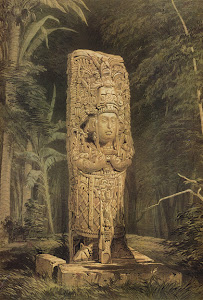
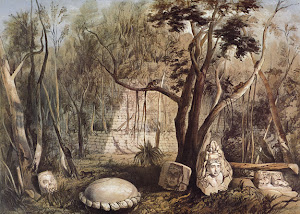
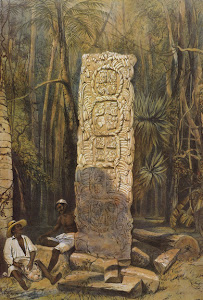
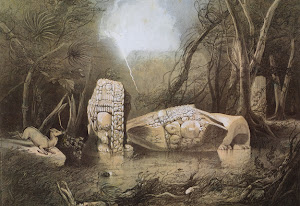
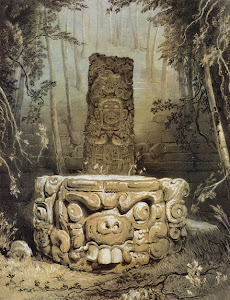

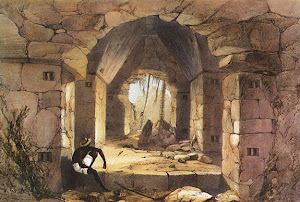


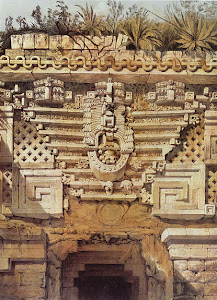
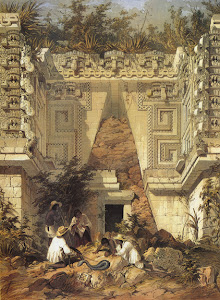
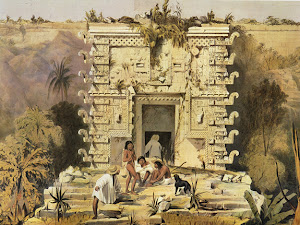
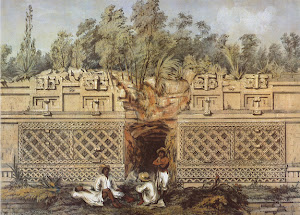
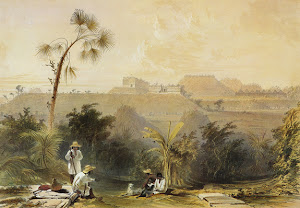
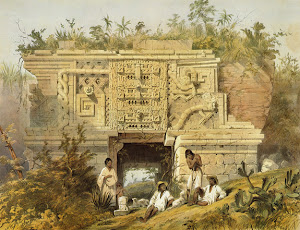









No hay comentarios:
Publicar un comentario